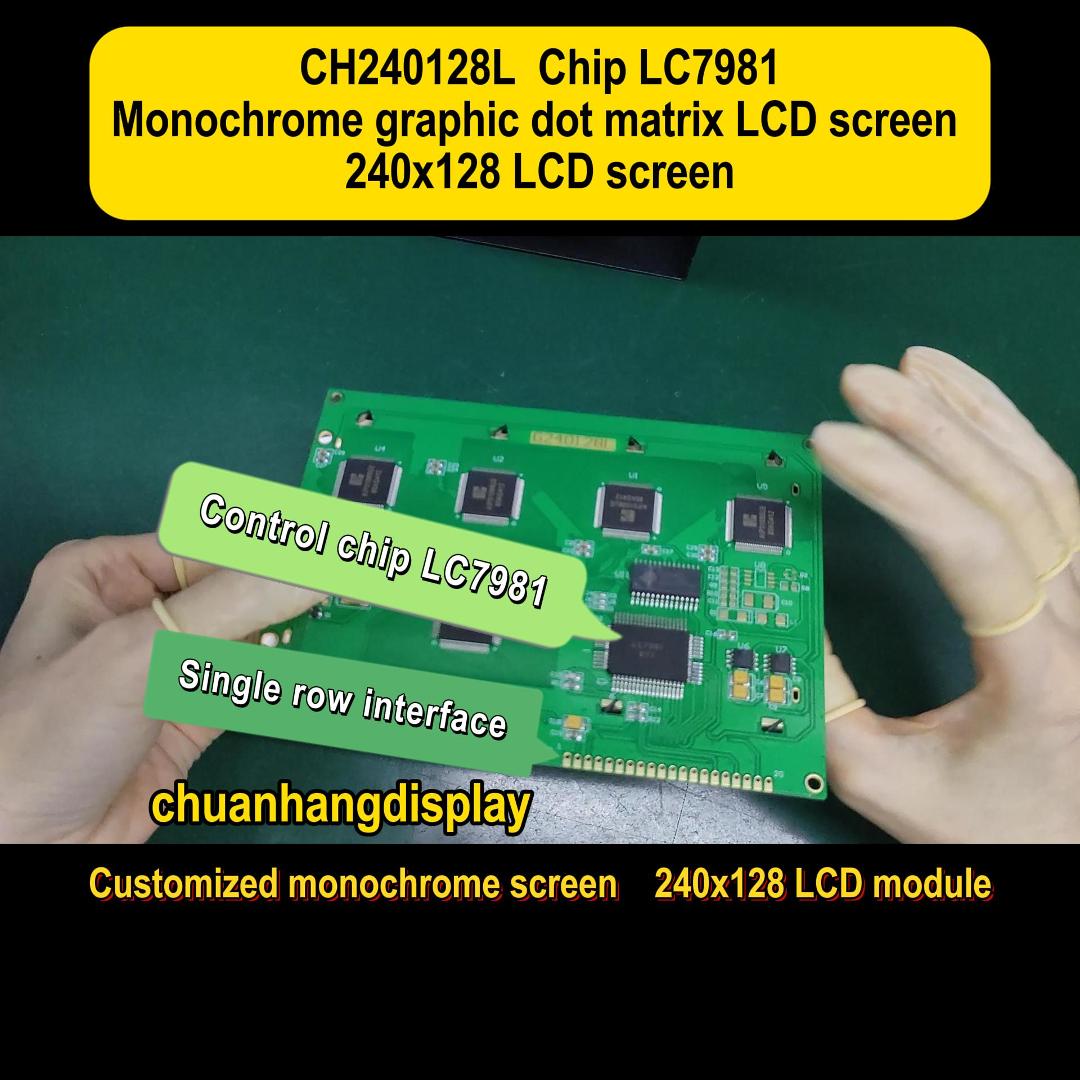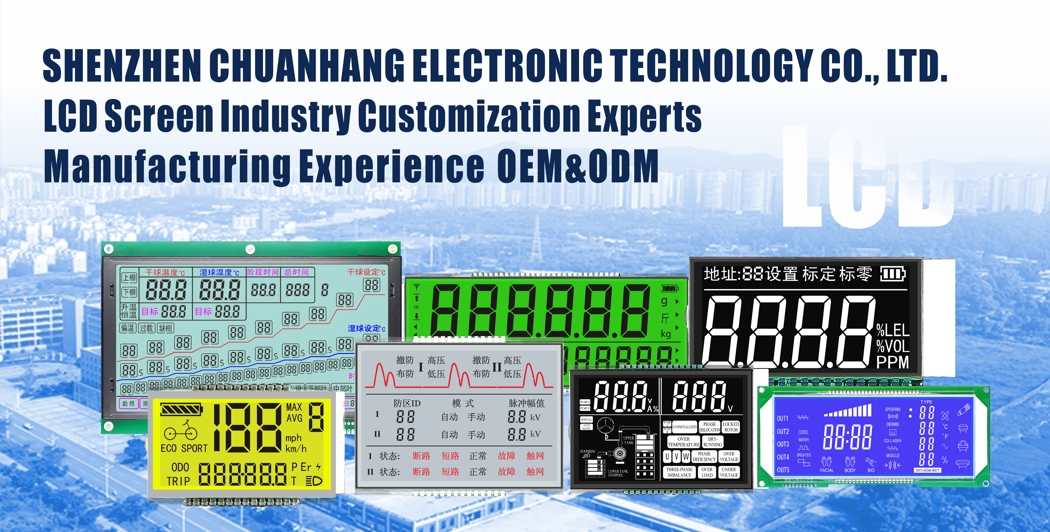In an increasingly digital world, the way we interact with devices is paramount. From the microwave in your kitchen to the complex medical equipment in a hospital, the display is often the primary point of human-machine interaction. While high-resolution screens grab headlines, there is a workhorse technology that remains indispensable for countless applications: the custom segment LCD display. These displays are the silent, reliable heroes providing clear, low-power, and highly readable information in a multitude of devices. This article delves into the world of custom segment LCDs, exploring their unique advantages, diverse applications, and how they can be tailored to specific needs, with a focus on the expertise offered by Chuanhang Display.

Unlike a dot-matrix display that uses a grid of pixels to create arbitrary shapes and characters, a custom segment LCD display is built with predefined, fixed segments. Each segment can be turned on or off to display specific information. Think of a classic digital clock: each digit is formed by illuminating a combination of seven individual bars (segments). A custom segment LCD takes this concept much further.
A "custom" segment LCD is specifically designed and manufactured for a single product or application. Instead of being limited to standard numbers or letters, the segments can be shaped into any form: icons, symbols, progress bars, company logos, dedicated words, or unique graphical elements. This allows manufacturers to create a user interface that is perfectly intuitive for their specific device. The team at Chuanhang Display specializes in working with engineers to translate their interface concepts into optimized, cost-effective custom segment LCD designs.
Why choose a custom segment LCD over a more generic off-the-shelf display or a dot-matrix alternative? The benefits are numerous and impactful:
Unmatched Readability: Segmented LCDs are renowned for their high contrast and clarity. They perform exceptionally well in various lighting conditions, especially in direct sunlight where emissive displays like LEDs often wash out. This makes them ideal for outdoor tools, automotive dashboards, and industrial equipment.
Extremely Low Power Consumption: This is arguably their greatest strength. Segment LCDs are passive devices, meaning they don't require power to illuminate each individual pixel. They rely on the light-reflecting properties of the liquid crystals. This results in incredibly low energy draw, making them the perfect choice for battery-powered devices that need to run for months or even years on a single charge, such as wireless sensors, thermostats, and utility meters.
Cost-Effectiveness for High-Volume Production: While the initial tooling cost (for creating the custom glass patterns) is higher than buying a standard display, the per-unit cost becomes very low in mass production. For products manufactured in the tens or hundreds of thousands, a custom segment LCD display is an economically superior choice.
High Durability and Reliability: With no fragile backlight components (often LED backlights are a separate assembly) and a simple, solid-state construction, these displays are highly resistant to shock, vibration, and temperature fluctuations. They offer a long operational lifespan, which is critical for medical devices and industrial controls.
Perfectly Tailored User Experience: A custom UI eliminates user confusion. Instead of scrolling through menus to find a function, the dedicated segment for "Battery Low," "Filter Change," or "Running" is immediately visible and understood. This enhances the overall usability and safety of the device.
The applications for these displays are vast and touch nearly every industry. You likely interact with several every day without realizing it:
Consumer Appliances: Microwave ovens, washing machines, coffee makers, air conditioners, and thermostats all use custom segment LCDs to show time, settings, and status icons.
Industrial and Automotive: Digital calipers, multimeters, control panels, pressure gauges, and dashboard indicators (for fuel, temperature, check engine) rely on their robustness and readability.
Medical Devices: Blood glucose meters, blood pressure monitors, infusion pumps, and portable diagnostic equipment depend on their low power and fail-safe clarity for critical health information.
Smart Home and IoT: Wireless sensors for temperature, humidity, and security, as well as smart meters for water and gas, use them to achieve multi-year battery life.
Office Equipment: Calculators, projectors, and printers use them to display basic numeric and status information.

Creating a custom segment LCD display is a collaborative process between the client and the manufacturer. A specialist like Chuanhang Display guides clients through key steps:
Concept and Definition: This involves defining all the required information, icons, and symbols the display needs to show. Chuanhang Display engineers help optimize the layout for aesthetics, functionality, and manufacturability.
Glass Pattern (Photomask) Design: The custom segment pattern is designed and used to create a photomask, which is essentially a stencil for etching the transparent electrode segments onto the glass substrates. This is the core of the "custom" tooling.
Material Selection: Choices are made regarding the type of glass, the liquid crystal mixture, polarizers, and the connection method (such as Zebra elastomeric connectors or pin connectors). These choices affect factors like viewing angle, temperature range, and contrast.
Prototyping: Before full-scale production, prototypes are built and tested to ensure everything functions as intended and integrates correctly with the device's electronics.
Mass Production and Testing: Once the prototype is approved, mass production begins. Each display undergoes rigorous electrical and visual testing to ensure quality and reliability.
Q: How long does it take to develop a custom segment LCD?
A: The timeline can vary, but typically it takes 4-8 weeks for tooling and prototype samples. Mass production can begin shortly after sample approval. It's crucial to factor this lead time into your product development schedule.
Q: Are they suitable for use in extreme temperatures?
A: Yes, this is a major advantage. Standard custom segment LCD display units can operate from -20°C to +70°C. With special materials and liquid crystal mixtures, Chuanhang Display can produce displays that function in ranges as wide as -40°C to +100°C and beyond, suitable for automotive and military applications.
Q: What about the viewing angle?
A: The viewing angle is typically very good but is determined during the design phase. Twisted Nematic (TN) technology offers a standard viewing angle, while Optically Compensated Bend (OCB) or STN technologies can provide wider viewing angles if required for the application.
Q: Can a custom segment LCD have a backlight?
A: Absolutely. While they are highly readable using ambient light, LED backlights can be added for viewing in complete darkness. Backlights can be edge-lit or full array, and in various colors (white, blue, green, red are common). Chuanhang Display can integrate these seamlessly.
Q: How do I connect and drive a custom segment LCD?
A: These displays are driven by a microcontroller unit (MCU) with a built-in LCD driver. The number of segments required dictates the driver needed. The manufacturer provides a pinout diagram that shows the connection between each segment and the driver pin, simplifying the PCB design process.
In conclusion, the custom segment LCD display is a testament to the idea that the best technology is often the one perfectly suited to its task. It offers a blend of clarity, efficiency, durability, and tailored functionality that is unmatched for a huge range of applications. For companies looking to develop a reliable, user-friendly, and cost-effective interface for their product, partnering with an experienced manufacturer like Chuanhang Display is the key to unlocking the full potential of this versatile technology.